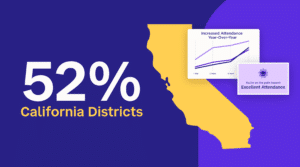
Featured Resource
Why Over Half of California School Districts Trust SchoolStatus
Read More >Join Mission: Attendance to reduce chronic absenteeism in 2025-26! >> Learn How <<





Sometimes calling families can feel tricky. The first time a teacher calls a student’s family can be unnerving on both sides, especially if there haven’t been emails or text messages exchanged beforehand. Once on the call, both parties need to be able to understand the reason for the outreach, especially when there are concerns about a student’s performance or behavior.
Educators can learn important tips from sales teams, who are trained to navigate inbound and outbound phone calls with clients they don’t know. Some use Research Based Solutions to learn dialogue techniques and train themselves to be open and empathetic in conversation. SalesKey Solutions offers an online behavior assessment to help understand communicating with different personalities.
One of our SchoolStatus members took the training at SalesKey to see if this method worked. What he learned:
You can identify the type of person that you are speaking with on the phone by learning four types of persona.”
— Richard Walter
Whether it’s a cold call about a new streaming service or phone conversation between a teacher and a family, understanding four main personas will help you connect with the person on the other end of the line—and get your message across. Every person exhibits elements of each persona depending on the situation. When you are making a call to a student’s family—especially if you have never spoken to them—understanding how to communicate with each persona is a good starting point for effective conversation.
Let’s take a brief look into each one.
How to identify Commanders:
How to communicate with commanders:
How to identify Performers:
How to communicate with Performers:
How to identify Analyzers:
How to communicate with Analyzers:
How to identify Empathizers:
How to communicate with Empathizers:
If we are more attentive in our communications, we can more successfully engage, encourage involvement, and build trust through understanding.
The Harvard Graduate School of Education explains that better understanding comes through building empathy to “strengthen your school community.” Part of our work can begin with learning skills to anticipate communication behaviors and empathize with those on the other end of the line.
 SchoolStatusSchoolStatus gives educators the clarity and tools they need to get students to class and keep them moving ahead. Through our integrated suite of data-driven products, we help districts spot attendance patterns early, reach families in ways that work for them, and support teacher growth with meaningful feedback. Our solutions include automated attendance interventions, multi-channel family communications in 130+ languages, educator development and coaching, streamlined digital workflows, and engaging school websites. Serving over 22 million students across thousands of districts in all 50 states, SchoolStatus helps teachers and staff see what matters, act with speed, and stay focused on students.
SchoolStatusSchoolStatus gives educators the clarity and tools they need to get students to class and keep them moving ahead. Through our integrated suite of data-driven products, we help districts spot attendance patterns early, reach families in ways that work for them, and support teacher growth with meaningful feedback. Our solutions include automated attendance interventions, multi-channel family communications in 130+ languages, educator development and coaching, streamlined digital workflows, and engaging school websites. Serving over 22 million students across thousands of districts in all 50 states, SchoolStatus helps teachers and staff see what matters, act with speed, and stay focused on students.
News, articles, and tips for meeting your district’s goals—delivered to your inbox.
Ready to learn more about our suite of solutions?
